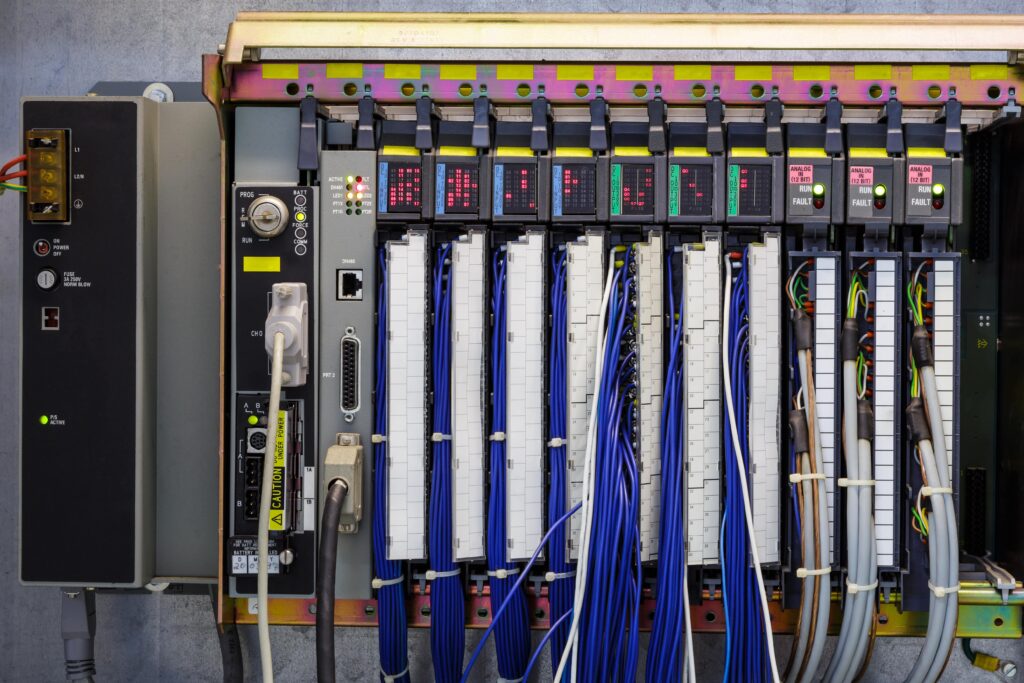
The Hidden Legacy of PLC Documentation Debt in M&A
Industrial mergers and acquisitions (M&A) are increasingly shaped by the digital landscape. While financial audits, asset valuations, and operational assessments are standard elements of any M&A process, there’s a less visible yet critical factor that is often overlooked—PLC (Programmable Logic Controller) documentation debt. For companies operating in industrial sectors reliant on automation, PLC documentation debt is more than just an administrative nuisance; it’s a significant risk that can undermine integration efforts, disrupt operations, and devalue investments.
If you’re part of an industrial organization preparing for M&A or simply managing automation assets, understanding this risk is crucial to ensuring operational continuity and maximizing investment value.
What Is PLC Documentation Debt?
PLC documentation debt refers to the accumulation of incomplete, outdated, or missing documentation for automation systems. PLCs serve as the backbone of automated operations in industries like manufacturing, energy, and utilities. Yet, proper documentation—such as program logic, hardware configurations, and associated operational standards—often lags behind as systems evolve.
This issue tends to grow over time, particularly in industries where frequent system modifications occur. Whether changes stem from upgrades, retrofits, or troubleshooting efforts, the failure to document them compounds the problem. What’s left is a tangled web of partial records that lacks clarity or consistency.
Much like financial debt, documentation debt has interest—it becomes more costly over time as patches and fixes introduce further complexity. When organizations enter an M&A phase, they risk inheriting this ‘liability,’ potentially creating unforeseen operational disruptions and reducing the overall value of the transaction.
Common Sources of Documentation Debt
- Unrecorded Changes: Modifications made during equipment upgrades or emergency repairs are often undocumented.
- Outdated Files: Legacy systems whose documentation hasn’t been updated to match new configurations.
- Data Silos: When documentation is scattered across departments or stored in inaccessible formats without a centralized location for retrieval.
For potential buyers in M&A scenarios, such an environment poses daunting challenges to assessing and integrating automation assets.
Why PLC Documentation Debt Matters in M&A
The implications of PLC documentation debt during M&A extend far beyond operational inconveniences. Here’s why it demands serious attention:
1. Operational Risks
Without complete and accurate documentation, integrating automation platforms can lead to system failures or misconfigurations. This puts production schedules, workforce safety, and compliance at risk—all costly consequences for new ownership.
2. Hidden Costs
Documentation debt introduces inefficiencies that can drive unplanned expenditures during integration. Teams may need to dedicate significant time to reverse-engineering undocumented systems, delaying anticipated synergies and reducing ROI.
3. Valuation Challenges
Automation systems represent critical operational assets for many industrial companies. When documentation debt obscures the functionality or reliability of these systems, it becomes harder to assign accurate valuations—and buyers often adjust their offers accordingly.
4. Cybersecurity Vulnerabilities
Partial or outdated documentation can hinder efforts to identify potential entry points for cyberattacks. This is particularly relevant for operational technology (OT) systems, where cybersecurity failures can cause widespread disruptions.
For example, consider an M&A scenario in the utility sector. Suppose the target company’s wind turbine control systems come with unreadable or missing PLC files. During integration, significant delays emerge as acquisition teams scramble to understand their operations. This not only stalls progress but may also open vulnerabilities that pose compliance risks with industry regulations.
The message is clear—unseen documentation debt can quickly morph into a strategic liability.
Addressing PLC Documentation Debt Proactively
Tackling PLC documentation debt requires both technical expertise and strategic foresight. Here are key strategies industrial companies should adopt either pre-emptively or in preparation for an M&A deal:
1. Conduct a Documentation Audit
Before an M&A process begins, companies should perform a thorough audit of their existing documentation. This audit should involve:
- Assessing the completeness of all PLC-related files.
- Identifying discrepancies between current documentation and actual system configurations.
- Mapping out undocumented changes or inconsistencies.
2. Implement Documentation Standards
Standardized workflows for maintaining up-to-date PLC documentation are critical. This includes version control protocols, detailed change logs, and centralized digital storage systems to ensure information is accessible and accurate.
3. Leverage Expertise for Remediation
Organizations often lack the internal expertise to address documentation debt comprehensively. This is where industrial specialists like Shermco come into play. With deep experience in PLC systems, Shermco offers solutions such as:
- Reverse engineering undocumented or incomplete systems.
- Developing or updating documentation to meet modern standards.
- Conducting training to ensure teams can maintain documentation effectively moving forward.
4. Incorporate Documentation into Due Diligence
For buyers, questioning the state of PLC documentation during due diligence is non-negotiable. Specifically, buyers should:
- Investigate how well-maintained the seller’s automation documentation is.
- Factor the cost of remediation into negotiations, if necessary.
Thinking ahead minimizes disruptions and protects the integrity of post-acquisition operations.
Why Acting Now Matters
Leaving PLC documentation debt unchecked can have cascading effects. While M&A may be years down the line, proactively addressing this often-overlooked issue could save substantial costs and headaches down the road. For companies already navigating the M&A process, there’s no time to lose. Ignoring this operational blind spot risks exposing your transaction to unnecessary complexity, hidden costs, and unforeseen vulnerabilities.
At Shermco, we understand the technical challenges industrial businesses face—and we’ve seen first-hand how resolving PLC documentation debt can make the difference between a smooth acquisition and a costly disruption. Whether you’re an M&A buyer seeking clarity or a seller aiming to enhance the value of your automation assets, now is the time to take control of your documentation reality.
Don’t leave it up to chance. Let’s tackle the hidden legacy of PLC documentation debt together.